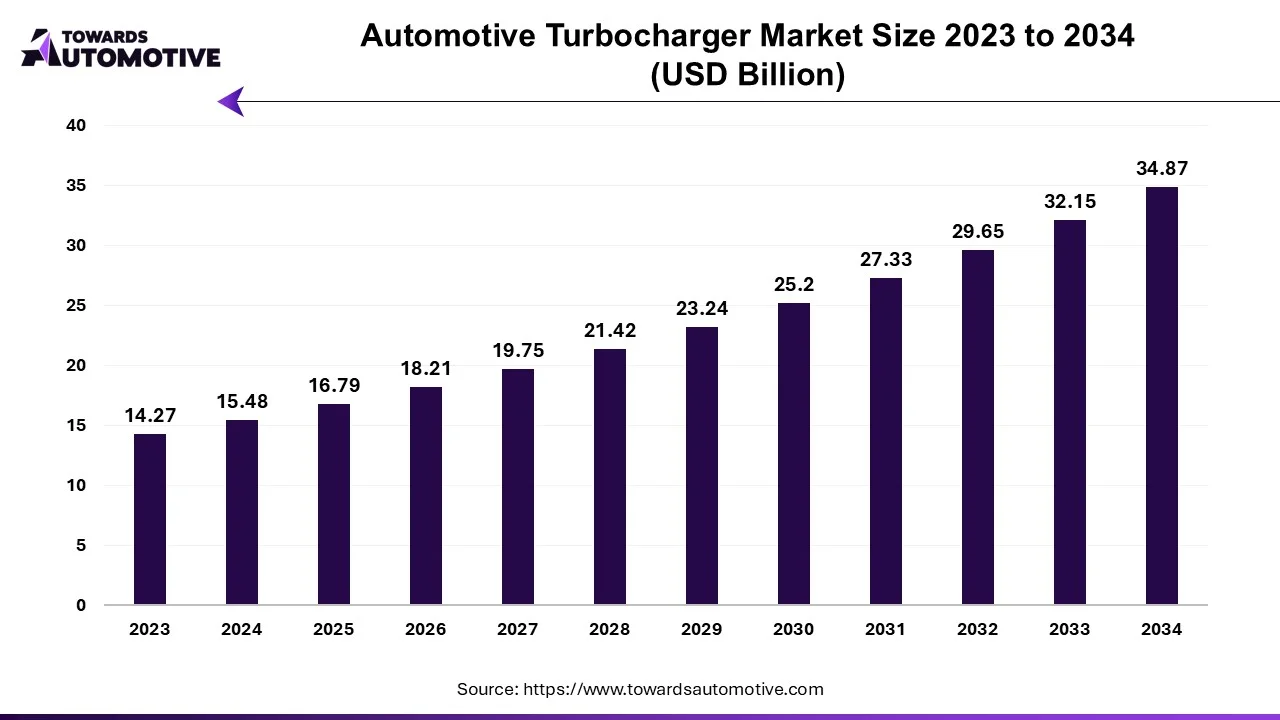The passenger car segment has emerged as a leading driver of growth in the automotive turbocharger market, fueled by a combination of consumer demand for high-performance vehicles, fuel efficiency, and the push for lower emissions. Turbocharging technology is becoming increasingly integral to the development of passenger cars, as automakers aim to meet the evolving expectations of environmentally conscious consumers while enhancing vehicle performance.
The global automotive turbocharger market is valued at USD 15.48 billion in 2024 and is projected to reach USD 34.87 billion by 2034, expanding at a robust CAGR of 8.46% from 2024 to 2034. This rapid growth underscores the increasing adoption of turbocharging technology, particularly in the passenger car segment, where it is playing a crucial role in shaping the future of the automotive industry.

Get All the Details on Our Solutions – Brochure Download @ https://www.towardsautomotive.com/download-brochure/1069
A Solution to Rising Fuel Prices and Environmental Concerns
One of the most compelling reasons for the growing adoption of turbochargers in passenger cars is the rising demand for fuel-efficient vehicles. With fuel prices climbing and concerns about the environment intensifying, consumers are increasingly seeking vehicles that offer excellent fuel economy without compromising on power and performance. Turbocharged engines provide an ideal solution to this challenge, offering a significant boost in power output while enhancing fuel efficiency.
By compressing air entering the engine, turbochargers increase the engine’s efficiency, allowing it to produce more power without requiring larger, more fuel-hungry engines. This leads to better fuel economy, lower carbon emissions, and a reduction in the environmental impact of passenger vehicles.
Advancements in Turbocharging Technologies
In recent years, turbocharging technologies have advanced significantly. Features like variable geometry turbochargers (VGT) and twin-turbo systems are allowing automakers to fine-tune their vehicles’ performance. VGTs allow for more precise control over the airflow to the engine, optimizing fuel consumption and emissions across various driving conditions. Twin-turbo systems, on the other hand, provide more power across a wider range of speeds, further improving fuel efficiency without sacrificing performance.
These innovations have made turbocharged engines even more attractive to automakers, as they allow for better optimization of fuel consumption and reduced emissions, which are becoming increasingly important as governments impose stricter environmental regulations.
The Rise of Hybrid and Electric Vehicles
Another factor contributing to the growth of turbocharging in the passenger car segment is the increasing shift toward electric and hybrid vehicles. In hybrid powertrains, turbochargers are used to complement electric motors, further enhancing vehicle performance and fuel efficiency. This combination of traditional internal combustion engines with electric power offers a balanced approach to reducing emissions while maintaining the driving dynamics that consumers enjoy.
Turbochargers play a critical role in hybrid vehicles, where they help maximize the potential of smaller, more efficient engines, allowing these vehicles to achieve optimal performance even when running on electric power alone. As the market for hybrid and electric vehicles continues to expand, the demand for turbochargers is expected to follow suit.
Invest in Our Premium Strategic Solution @ https://www.towardsautomotive.com/price/1069
You can place an order or ask any questions, please feel free to contact us at sales@towardsautomotive.com
Explore the comprehensive statistics and insights on automotive industry data and its associated segmentation: Get a Subscription
For Latest Update Follow Us: https://www.linkedin.com/company/towards-automotive
